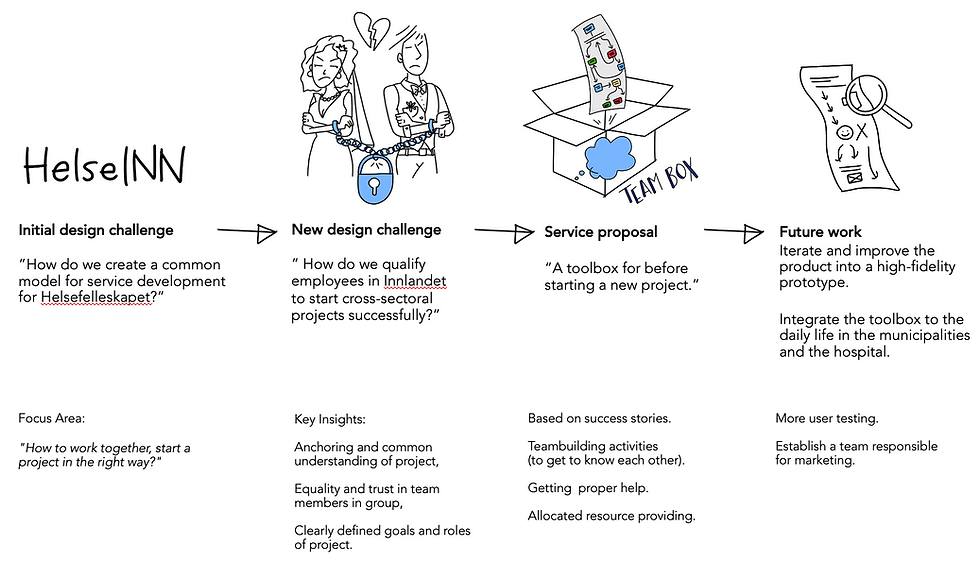TeamBox
"Think outside, follow inside of the box".

Service Design Group Project, 2022
TeamBox is a toolbox for project management and project development. It is directed towards healthcare workers who have little or no experience with project management and is designed to help them form a functioning team.
My Role
As part of a service design team, I conducted user research with my teammates and was solely responsible for the hand sketches and illustrations.
Tools
Figma, Miro, Illustrator, Post-its
Project Type
Group project, Collaboration with NTNU (Gjøvik, Norway) and HelseINN (NGO in Norway)
Table of Content
Shown through the Double Diamond Framework

Time Table


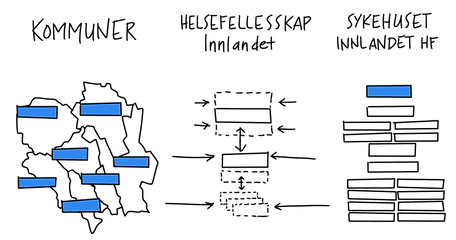
Client and Case
Our client was HelseINN. HelseINN is a non-profit organization that works on behalf of Helsefelleskap Innlandet to create a common model for service development in Innlandet, a region in Norway. Helsefelleskap Innlandet is a partnership between 42 municipalities and a hospital in the region.



Goal, Target Group and Focus Area
The aim was to create a common model for service development in Innlandet to ensure a common understanding of the problem, easier communication, equality and anchoring in both the community and the hospital.
The target group was employees in Innlandet working in the municipality or hospital and taking part in cross-sectoral projects.
The focus area was set by the client and was "How to work together and start the project in the right way".

Understand
To understand the problem, we conducted desk research and interviewed experts in the health care industry. We used affinity diagrams to analyze the interviews. Afterwards, we created personas and user journey maps based on the insights gained in the interviews.
Analyzing Interviews: Affinity Diagramming
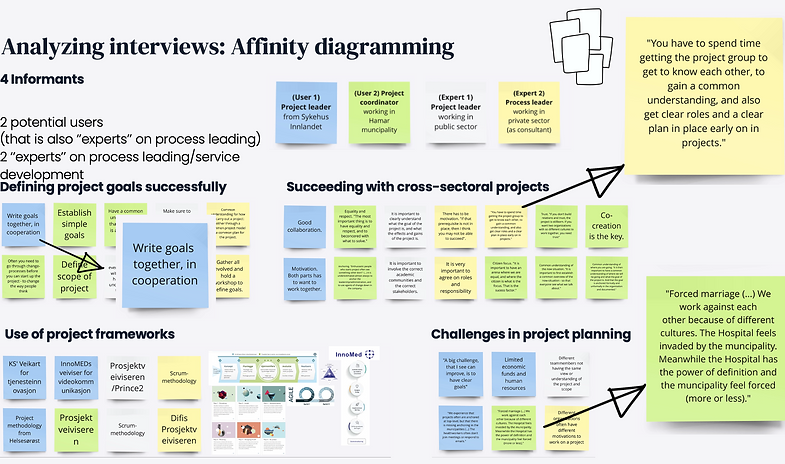
Journey Map
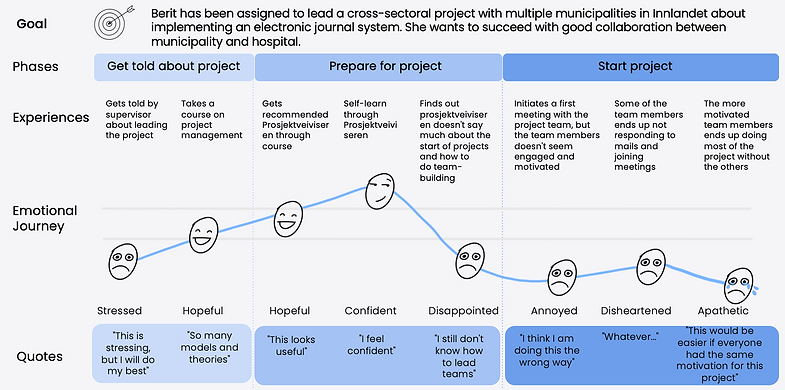

Define
Interview analysis revealed two key challenges:
-
Teams working across hospitals and communities often lack prior relationships, project management skills, and shared work culture or knowledge.
-
Current service development models are overly complex and vague, offering little guidance on how to initiate and build effective intersectoral teams.
These insights led to a new design challenge.
New Design Challenge
"How do we qualify employees in Innlandet to start cross-sectoral projects successfully?"
Ideate
To solve the new design challenge we proceeded with three steps in the ideation process.
1. First, we did brainwriting to get as many ideas as possible.
2. Then, we evaluated the ideas in a co-creation workshop with our client.
3. Lastly, we did an idea selection to come to the final idea through "Feasibility vs Impact" diagram.
Our final idea was to create a toolbox for the time before the project start ("Phase 0").
This was to be viewed as a supplement to the existing models, with the goal of qualifying employees for a successful project start.
Some criteria we considered important based on data collected in interviews, desk research, and conversations with the client were team building, anchoring, goals, and roles.
Success stories should be part of the content, as these could reflect real-life stories of how others have managed to successfully complete a project with their specific use of resources and techniques for project success.
A flowchart served as the structure, as it would encourage staff to think about important aspects at the beginning of the project.
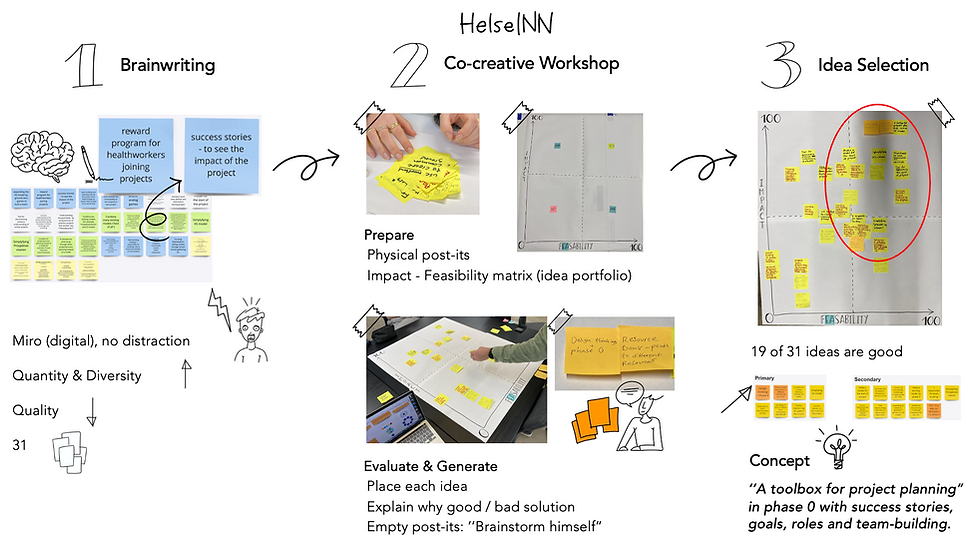
Final Proposal: TeamBox
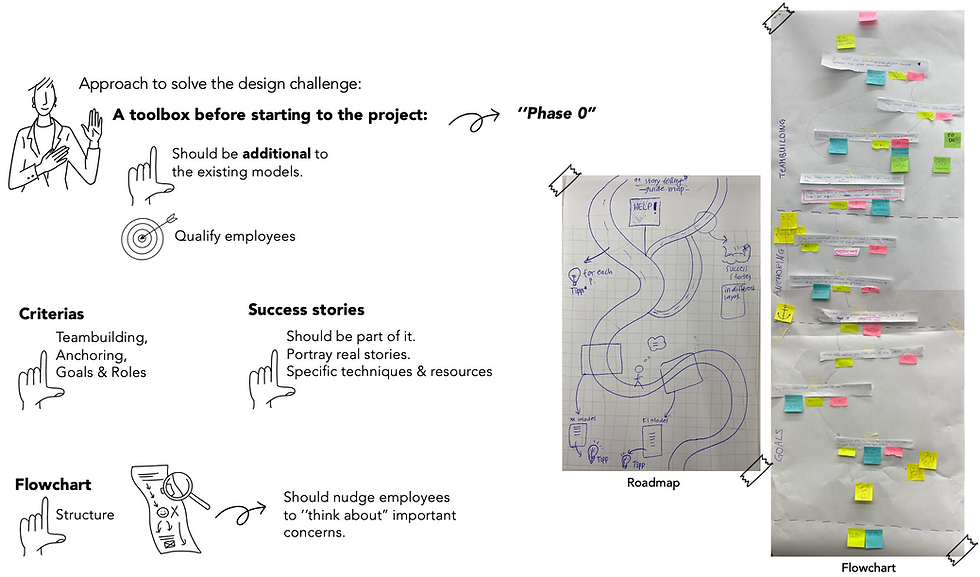
Prototype
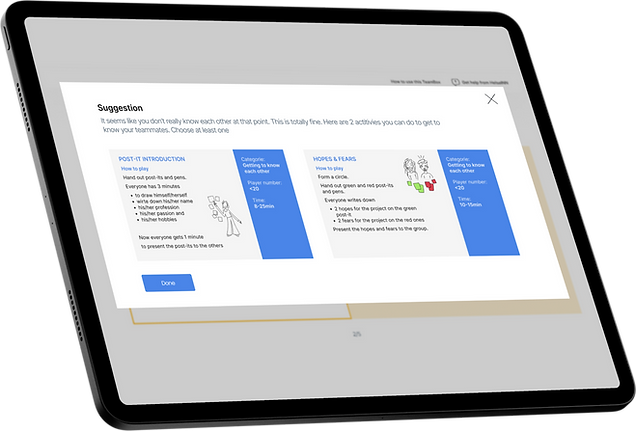
Based on the sketches of the idea, we created a Figma prototype. This prototype was used to test the concept with our client and users. The prototype was meant to embody TeamBox's solution. The prototype starts with an overview of the topics in the flowchart for the team to follow.
This is followed by a chronological listing of the topics. Each topic shows a success story and a question that can be answered yes or no. This is designed to get the user thinking and providing context through storytelling. If the team answers no, a suggestion appears that they can use to answer yes. Once through the flowchart, the user is notified and can start the project with an existing team.
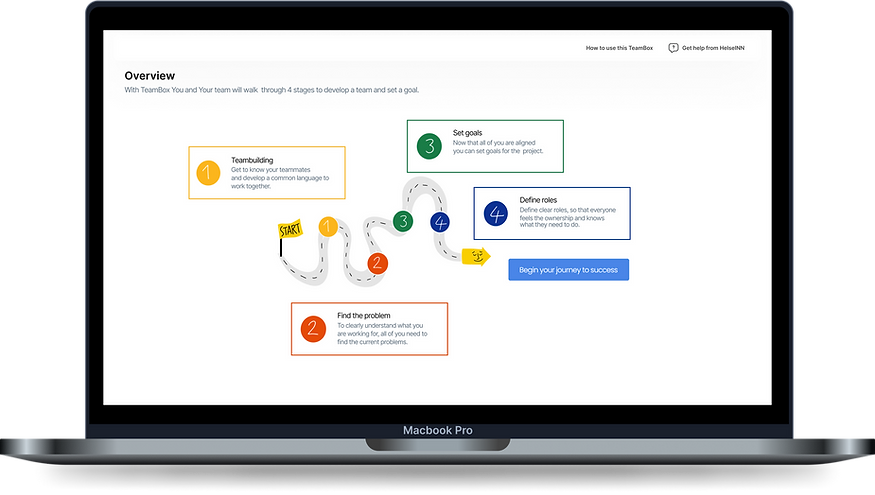
Overview of all phases


Success story and questions

Suggestion for team building
Testing & Evaluating
We iterated the prototype with the client and users in a qualitative user test. Most users would like to have more freedom in navigation. The four steps on top of the page that indicated where the user is, should be made clickable and also show each issue by a little dot in between the steps. On top of the changes to the navigation, the success story should have more character and detail, to make it more personal for the user. As some users mentioned that they were missing the reason for proceeding with the shown issue in the success story, we added a “why this step is important” paragraph to the success story, to make it even clearer for the user why they should not skip the shown step.

Evaluation of Project and Service Proposal
In our project, we applied service design as a mindset, process, and toolset to balance user and client needs.
We grounded our approach in the six core principles from this is Service Design Doing:
-
Human-centered: We considered how the project impacted various people—our client, stakeholders, and potential users.
-
Collaborative: We involved HelseINN, Helsefelleskap, and domain experts through regular meetings and workshops.
-
Iterative: We continuously refined insights and solutions, revisiting personas and our Figma prototype multiple times.
-
Sequential: We used tools like timelines, the Double Diamond model, service blueprints, and journey maps to structure our process.
-
Real: Our research was grounded in real-world stories and challenges, and we aimed to make our prototype as realistic as possible.
-
Holistic: We considered the broader system—balancing different stakeholder needs and understanding the full scope of problems and solutions.
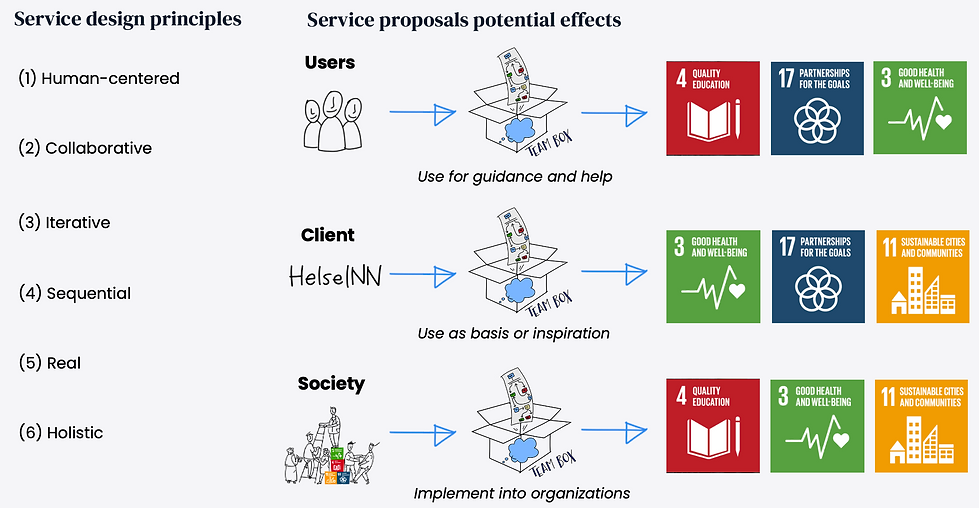
Evaluating Potential Impact: "TeamBox"
Users (municipality and hospital employees) can use TeamBox for guidance, leading to increased competence, stronger partnerships, and improved quality of work life.
Client (HelseINN) can use TeamBox as inspiration for their solution to Helsefelleskap, making their work easier and fostering more sustainable communities.
Society may benefit from TeamBox through better public services, more competent staff, and stronger, more sustainable communities in regions like Innlandet.
Conclusion
